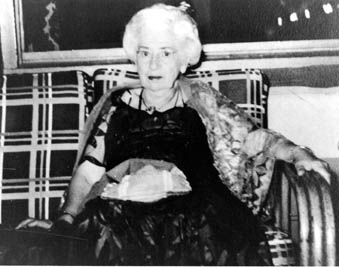
When looking at the Grand Canyon, it is usual for people to stop and wonder what happened over the last few million years to create such a magnificent sight. There is an incredible amount of geological and cultural history within the park and there are hundreds of people to thank for preserving its natural beauty. Many important figures have helped shaped the way we view Grand Canyon but today we are going to highlight a handful of unforgettable women who have spent a portion of their lives at Grand Canyon.
Mary Elizabeth Jane Colter (1869-1958)
Mary Jane Colter was one of few women architects in her time. In 1910 she began her work with the Fred Harvey company designing landmark buildings at the Grand Canyon. For 38 years she completed multiple projects that are still viewed today. Her creative style consisted of blending Spanish Colonial and Native American architecture while incorporating rustic elements that became extremely popular in the Southwest.
Her works at the South Rim include Hopi House, Hermit’s Rest, Lookout Studio, the famous Desert View Watchtower, a 70 foot tall rock tower with a hidden steel structure, Bright Angel Lodge, and buildings inside the canyon down at Phantom Ranch. She also decorated the El Tovar Hotel, a historic lodge known for its rustic design and well known guest list.
Mary Colter’s impact on the South Rim is unquestionable. Her buildings were listed as National Historic Landmarks in 1987. She created some of the most iconic structures within the park. Her unique style compliments the timeless beauty of the canyon while leaving a lasting impression on all the visitors that experience her designs.
Nampeyo (1859-1942)
Nampeyo was born to the Corn Clan in the First Mesa Village of Tewa. By the time she was 20 she was a sought after potter. Her interests were in 14th century style Hopi pottery. This style is harder and less prone to cracking. Using ancient methods, she produced a smooth finished surface with intricate designs.
In 1905 she traveled to Hopi House at Grand Canyon and lived as in artist in resident selling her pottery there for two years. She bacame quite famous to the tourists who would come to the curio shop and view her work. She left the Grand Canyon to exhibit her works across the U.S in 1907.
One of Nampeyo’s art decorated ceramic pots sold for $350,000 in 2010 at Bonhams Auction House in San Francisco. This set a world record for Southwest American Indian pottery. Many artists were impacted by Nampeyo’s designs and the ancient technique she used is still used by Hopi potters today.
Elzada Clover (1897-1980)
In the 1930s, rafting inside the Grand Canyon was a rare event, only one woman had tried and not survived. Though the canyon was not considered a place for women, botanist Elzada Clover stated “just because the only woman who ever attempted this trip was drowned is no reason women have any more to fear than men.” As a professor for the University of Michigan, she was the first person to catalog native plants along the Colorado River. She was one of the first women to raft the entire river successfully.
In 1938, Clover and graduate student Lois Jotter embarked on the quest to catalog plant life along the Colorado River. They traveled from Green River, Utah to Lake Mead. The trip lasted 48 days. Their surveys are the only remaining study of plant life in the ecosystem before the landscape was altered by Glen Canyon Dam.
Five plant zones were discovered during this time. Many diverse environments exist in this landscape, from moist sand along the river’s edge to shrubby zones in higher elevation. Clover and Jotter published their findings in American Midland Naturalist in 1944. Elzada was a pioneer for women, showing them that rafting the river was no longer just a man’s sport and that discoveries were lurking around every bend.
Pauline ‘Polly’ Patraw (1904-2001)
Pauline Patraw, Polly for short, was the first ranger-naturalist at the Grand Canyon National Park. She was only the second female ranger-naturalist in the National Park Service. She came to the North Rim of the Grand Canyon in 1927 on a road trip across the west. After graduating from the University of Chicago studying botany, she applied with the U.S Forest Service as a ranger-naturalist but women were not hired for that position. Undeterred, she applied at Grand Canyon National Park for the same position and was sworn in as a ranger in 1930. She spent two years working at the park and spent her life conducting research of plants and flowers in the Southwest.

